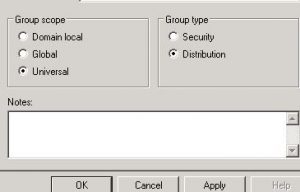



Create a new public folder and see if you can add the Send-As permissions to it or you will have the same error above.This what what you need to do to solve this problem: (EXCHG.141).aspx?v=14.3.123.3&t=exchgf1&e=ms.圆AE46BĮxchange Management Shell command attempted: Add-ADPermission -Identity 'CN=PUBLICFOLDER,CN=Microsoft Exchange System Objects,DC=DOMAINNAME,DC=COM' -User 'DOMAINNAMEUSERNAME-ExtendedRights 'Send-as' Active directory response: 00000005: SecErr: DSID-031521D0, problem 4003 (INSUFF_ACCESS_RIGHTS), data 0 Additional information: Access is denied. When migrating from a Hosted Exchange provider (Source), you will need to ask their support. Being a member of the Public Folder Management Group does not provide enough permissions to perform a Public Folder migration. Elapsed time: 00:00:00Įrror: Active Directory operation failed on . Change the user name in the cmdlet to be the name of the administrator account that is performing the Public Folder migration. When I tried to configure the send as permission trough the EMC or Powershell I goth this error message: Summary: 1 item(s). Reading the permissions works instead.Today I faced a new problem, on some Public folders I wasn’t able to change the send as permission. It makes no diefference which folder/node is tried to be updated, it always fails.

Folder fo = .Folder.Bind(service, myFolder.Id, propSet)
#Edit exchange public folder permissions full
PropertySet propSet = new PropertySet(BasePropertySet.FirstClassProperties, FolderSchema.Permissions) Someone with Exchange Administrator or Exchange Full Administrator rights can still manage the public folder permissions using the Exchange System Manager (ESM), so you should be able to use it to control the permissions as long as you are logged on as an account with the appropriate Exchange Administrator role. View.Traversal = FolderTraversal.Shallow įolderId InboxId = new FolderId(WellKnownFolderName.MsgFolderRoot, ) įindFolderResults = service.FindFolders(InboxId, view) įoreach (.Folder myFolder in findFolderResults.Folders) Note: For Exchange 20, only administrators can manage public folders for Exchange 20. Following are the different roles that you can assign and the permissions that are granted to each role. SearchFilter searchFilter = new SearchFilter.IsGreaterThan(FolderSchema.TotalCount, 0) When you create a public folder in Exchange 20, you can specify how much access others have to that folder by assigning roles. View.PropertySet = new PropertySet(BasePropertySet.FirstClassProperties) Now I'm actually using the same credentials (Windows Auth) as in outlook, using the following code: ExchangeService service = new ExchangeService(ExchangeVersion.Exchange2010_SP2) Now, if i try the same thing via EWS, i only get "Access is denied. Exchange Public Folders - Change permissions This includes pupils and as we never use these folders some staff have took the word public to mean private. When accessing another Mailbox in Exchange 2010 SP2 (I got owner rights to its folders, was checked IN OUTLOOK via Creating/Modifying/Deleting a user permission on Inbox). When a business that is upgrading the Exchange Server to a newer version, then the existing data from the mailbox will migrate to new one through batch migration.


 0 kommentar(er)
0 kommentar(er)
